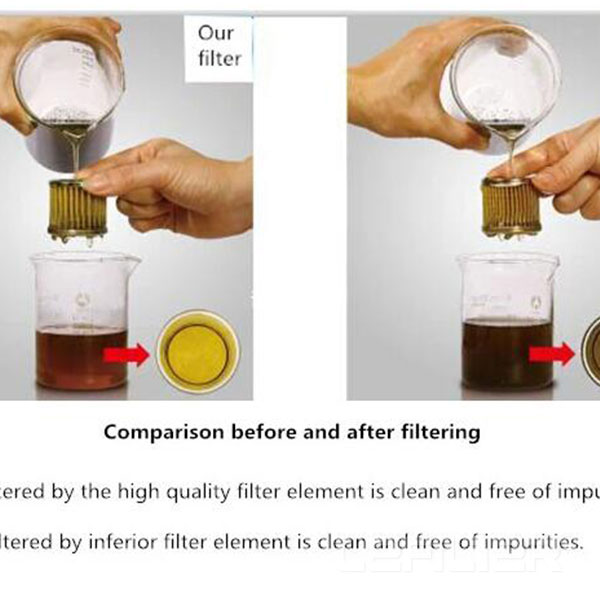Filter type and location
By definition, the type of filter — suction, return, pressure, or offline — and its physical location in the loop are almost inseparable.
The suction filter is used to protect the pump from fluid contamination. They are located upstream of the pump inlet. Some may be simple inlet filters, submerged in the fluid in the tank. Others can be installed externally. In either case, the suction filter has relatively rough elements due to the cavitation restriction of the pump. (Some pump manufacturers do not recommend the use of suction filters. For information on inlet restrictions, please be sure to consult the pump manufacturer.) Therefore, suction filters are not used as the main protection against pollution in the system. In fact, suction filters use modern hydraulics. The filters in the equipment have been greatly reduced.
If the pump is particularly sensitive to contamination, a return oil filter may be the best choice. In most systems, the oil return filter is the last component that fluid passes through before entering the reservoir. Therefore, it can capture wear debris from all working parts of the system and any particles that enter through the worn cylinder rod seals, and then these contaminants enter the reservoir and are pumped back to the system. Since the filter is immediately upstream of the liquid storage tank, its pressure level and cost are relatively low.
Please note that retracting some cylinders with large diameter rods may cause the flow to double. This high return line flow rate may open the filter bypass valve, allowing unfiltered fluid to flow downstream. This may be an undesirable situation and should be considered when specifying the filter.
The pressure filter is located downstream of the system pump. They are designed to handle system pressure and adjust to the specific flow rate in the pressure line where they are located. Pressure filters are particularly suitable for protecting sensitive components located directly downstream of the filter, such as servo valves. Since pressure filters are located downstream of the pump, they also help to protect the entire system from any contamination generated by the pump.
Duplex filters are a common special configuration and may include pressure filters and return filters. The duplex filter provides continuous filtration. They have two or more filter chambers and include the necessary valves to achieve uninterrupted operation. When a filter element needs to be repaired, the double valve will move to divert the flow to the opposite filter chamber. The dirty element can then be replaced while the flow continues to pass through the clean element. The double valve is usually an open crossover type, which prevents any flow obstruction.
Offline filtering is an increasingly popular filtering device. Also called recirculation, renal circulation or auxiliary filtration, it operates independently of the main hydraulic system of the machine. This makes it attractive as a retrofit project for the problematic system. The offline filter circuit includes its own pump and motor, filter, and appropriate connection hardware. These components are installed offline as small sub-systems independent of the working circuit, or they may be included in the fluid cooling circuit. The fluid is continuously pumped out of the reservoir, through the offline filter, and back to the reservoir. A rule of thumb: the size of the offline pump should be designed such that the flow rate is at least 10% of the volume of the main storage tank.
With its polishing effect, offline filtration can keep the system fluid at a constant pollution level. Like the oil return filter, the offline circuit is best for keeping the overall system clean; it does not provide protection for specific components. The off-line filtration loop has an additional advantage, that is, it is relatively easy to retrofit existing systems with insufficient filtration. In addition, the offline filter can be repaired without shutting down the main system.
